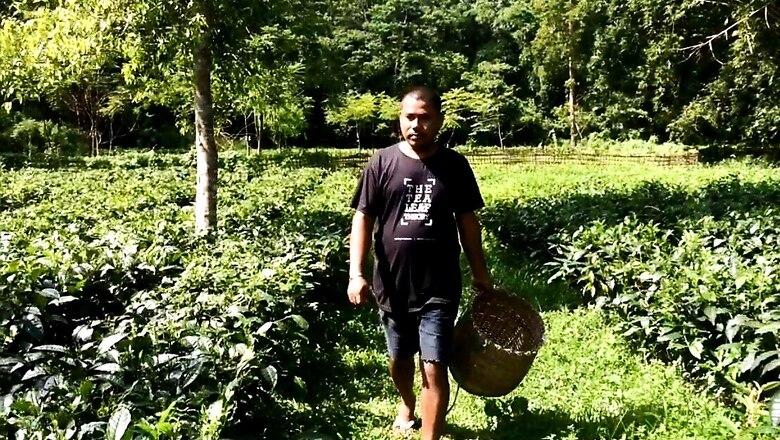
views
For Dulu Hazarika, who owns a tea garden spread over 26.5 acres of land in Tinsukia district of Assam, the coronavirus-induced lockdown has been a blessing in disguise. Despite a 40 per cent slump in production compared to last year, the hike in prices of green leaves has helped him earn handsome revenue.
“I have a bought leaf factory along with my garden. At the beginning of March, the green leaves were fetching somewhere around Rs 16-18 per kilogram. However, the lockdown led to an extensive growth of the bushes. We had to prune the bushes for the second time in a year which coincided with the most productive second flush period. Besides, we had to cut the extra growth of the bushes which also added to the loss of leaves and the productive period. All these have lowered production substantially. Reduction in production had a reciprocal impact on the prices. The pandemic has been a blessing in disguise,” said Hazarika, former secretary of the Small Tea Growers Association, Tinsukia. “The green tea leaves are being sold at Rs 48-50 per kilogram,” he added.
Assam has about 1.5 lakh small tea growers who contribute sizeably to the total tea produced in the state. Tinsukia district alone has about 20,000 small tea growers, highest in the state, according to Hazarika. The trend of small tea plantation in Assam could be traced back to the late 70’s and early 80’s. In 1978, first initiative in this regard was taken by the then agriculture minister late Soneswar Bora.
For Suraj Chetia, who has been in the business since 1992, said green tea leaves were sold at around Rs 12.50 per kilogram in 1999. It was still a profitable venture, even after considering wages of labourers.
The prices of green leaves took a nose dip form hereon. At one point, Cheita was compelled to throw green tea leaves worth Rs 7 lakh on the highway in Dhudor Ali as a mark of protest. He then restarted his business with Bishnupriya Tea Industry in 2013 with a micro tea manufacturing plant or bought leaf factory.
“Along with the pandemic, there were two major factors that affected the tea industry of Assam this year. The months of March and April were excessively hot. During March, the gardens were infested by pests. Right after the hot spell, there were four months of excessive rains, which is also not good for tea plants. There was also successive pruning that hit green leaf production. All these cumulatively have brought down production on one hand, but also led to hike in prices. It is now sold at Rs 54 to 55 for a kilogram in my factory,” he said. The bought leaf factories are in need of quality green leaf. “It’s like a fish market right now,” added Chetia.
This is the highest that green tea leaves in Assam have fetched and small tea growers are elated. The Guwahati Tea Auction Centre is also experiencing a boom. On an average, Assam Tea is fetching Rs 280-300 per kilogram in the auctions.
“It’s all demand and supply and if the producers get good price for their tea, then definitely handsome price shall be paid for the green leaf. As the production has come down, the quality of green tea has increased considerably. Small tea growers now maintain the plucking cycle of seven to eight days which ensure that quality of tea leaf – a bud and two leaves. We had urged the industry department of the state government to hold issuance of licences of setting up of small tea plantation for at least five years. This will ensure the quality. This plea is yet to be heard,” said Dipanjal Deka, secretary of Tea Association of India, Guwahati chapter.
A major problem for small tea growers is the absence of fair price for green leaves produced by them. The growers don’t possess their own factory and have to sell their produce to bought leaf factories or big tea estates. In order to ensure that small tea growers get a reasonable price for their green leaf, price sharing formula was notified under Tea Marketing Control order (notified in 2004). It provides for equitable sharing of the tea price between growers and manufacturers by taking into account the cost of production of green leaves in the smallholdings and the cost of manufacturing and marketing by the bought leaf factories.
“The boom in prices of green leaf will stay throughout the year and shall spill to 2021 too. However the next year when production increases, the prices might come down to Rs 25, which again shall be higher than the bad days,” added Deka.



















Comments
0 comment